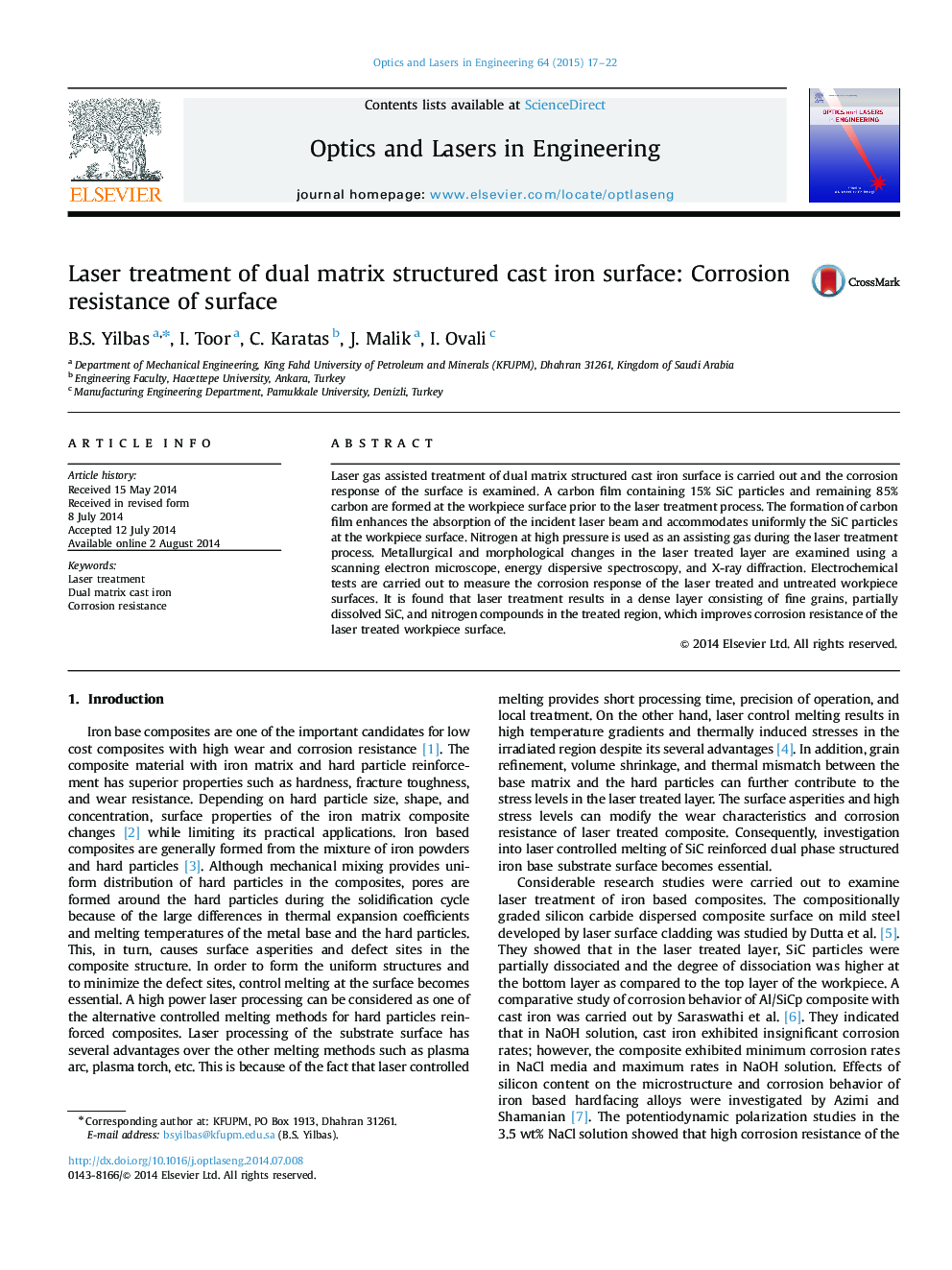| Article ID | Journal | Published Year | Pages | File Type |
|---|---|---|---|---|
| 734836 | Optics and Lasers in Engineering | 2015 | 6 Pages |
•A dense layer with fine grains is formed and partially dissolve SiC particles are observed.•Martensitic phases with a fatherly like structure are formed below surface.•The martensite is transferred to ferritic–pearlitic structures in the molten zone.•Corrosion resistance of treated surface improves significantly.•The presence of fine grains in dense layer and formation of nitride compounds contribute to the corrosion resistance.
Laser gas assisted treatment of dual matrix structured cast iron surface is carried out and the corrosion response of the surface is examined. A carbon film containing 15% SiC particles and remaining 85% carbon are formed at the workpiece surface prior to the laser treatment process. The formation of carbon film enhances the absorption of the incident laser beam and accommodates uniformly the SiC particles at the workpiece surface. Nitrogen at high pressure is used as an assisting gas during the laser treatment process. Metallurgical and morphological changes in the laser treated layer are examined using a scanning electron microscope, energy dispersive spectroscopy, and X-ray diffraction. Electrochemical tests are carried out to measure the corrosion response of the laser treated and untreated workpiece surfaces. It is found that laser treatment results in a dense layer consisting of fine grains, partially dissolved SiC, and nitrogen compounds in the treated region, which improves corrosion resistance of the laser treated workpiece surface.
